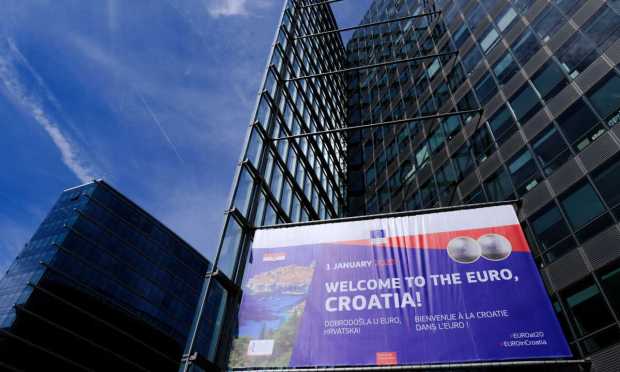Croatia Adopts Euro as Eurozone Economy Faces Multiple Headwinds

Having passed the last remaining legal hurdles, Croatia officially joined the eurozone on Jan 1.
The European Union (EU) member became the 20th country to officially adopt the euro currency and the 27th member to join the Schengen free-movement area, which now consists of 23 EU member states in addition to Iceland, Liechtenstein, Norway and Switzerland.
Learn more: Croatia Gets EU Approval to Adopt Euro
“Croatia worked hard to become the 20th member of the euro area, and it succeeded,” European Central Bank (ECB) Christine Lagarde said in a statement on Sunday (Jan 1). “It shows the euro is an attractive currency, which brings stability to its members.”
For the first two weeks of January, both the Croatian kuna and the euro will be in circulation and accepted as legal tender, giving Croatians time to deposit their old currency at the bank or swap it for the newly issued coins and bills.
Before then, Boris Vujčić, the governor of the Croatian National Bank, cautioned locals to have some cash on hand as “neither cards nor internet banking will be operational” while the banking system made the switch to the Eurosystem — the monetary authority of the eurozone — over the New Year weekend.
Challenges Created by the Euro Transition
The ECB is expecting the eurozone economy to have contracted in Q4 2022 and is likely to plunge into a recession as the months unfold, signaling tough consequences ahead for businesses and consumers.
In fact, according to the ECB’s projections, although inflation is expected to fall to 6.3% in 2023, it will remain high for several years and is unlikely to fall below 3% until 2025.
But for Croatian businesses and consumers, the phased transition to the euro, which has seen the kuna-euro exchange rate fixed since 2020, means that any additional disruption and price adjustments will likely be kept to a minimum.
Lithuania, the last country to join the eurozone on Jan. 1, 2015, managed to pull it off without any significant challenges for businesses and retailers.
Like Croatia, Lithuania had a transition period during which both the litas and the euro were legal tender. At the time, the Lithuanian central bank warned that during this period the amount of cash in circulation would likely increase by around 20%, creating a temporary challenge for businesses having to manage stocks of both currencies.
Cash distribution businesses were especially busy and were asked by the central bank to ensure they had sufficient volumes of low-denomination euro banknotes and coins to keep businesses supplied.
Against that backdrop, local shops and retailers will likely play an important role in Croatia’s transition as they assist consumers in swapping their cash from one currency to another.
For straight swaps, people are required to visit a bank or post office. But if Croatians pay with kuna during the transition period, they can expect to receive their change in euros, creating a highly localized distribution network for low-denomination notes and coins.
This requires retailers to be well-supplied by the country’s cash circulation infrastructure, but it remains to be seen how the country will tackle the logistical challenge of removing all the old kuna bills and coins from circulation in the next 10 days.
For all PYMNTS EMEA coverage, subscribe to the daily EMEA Newsletter.
